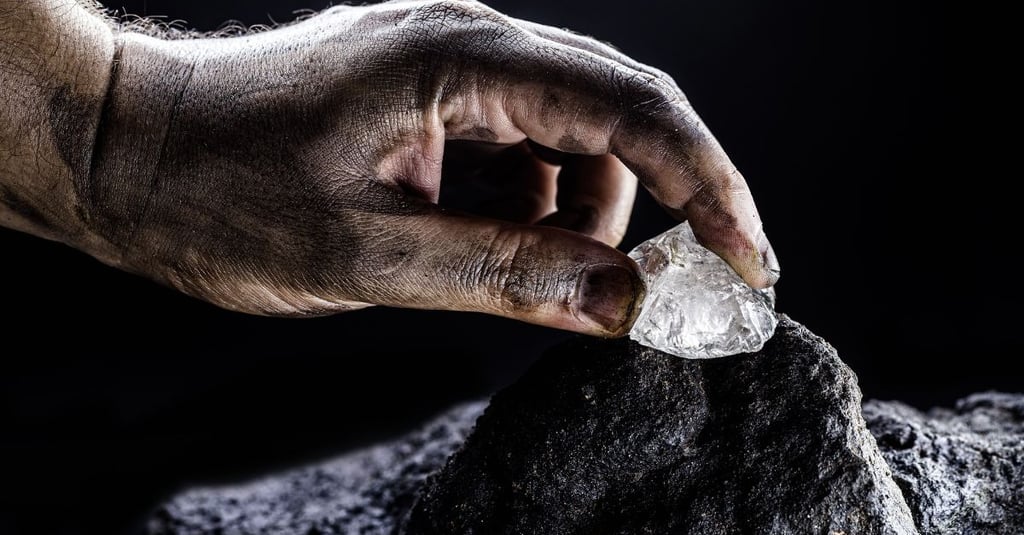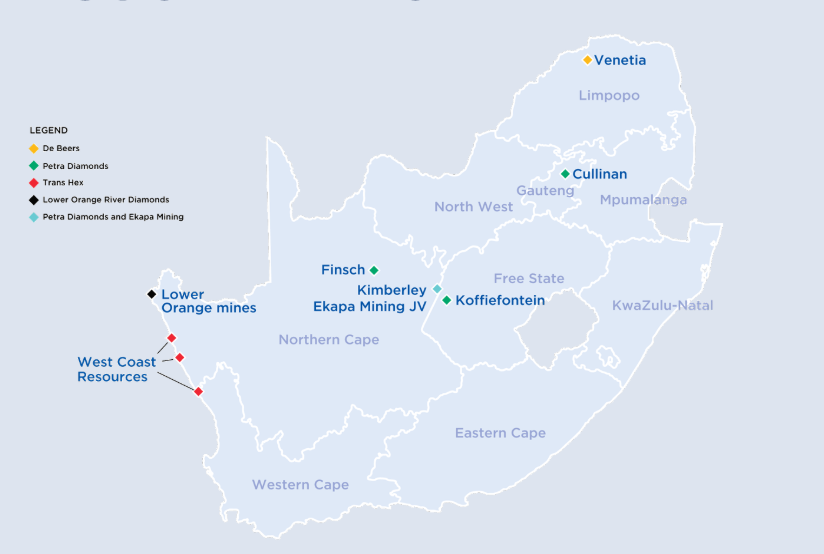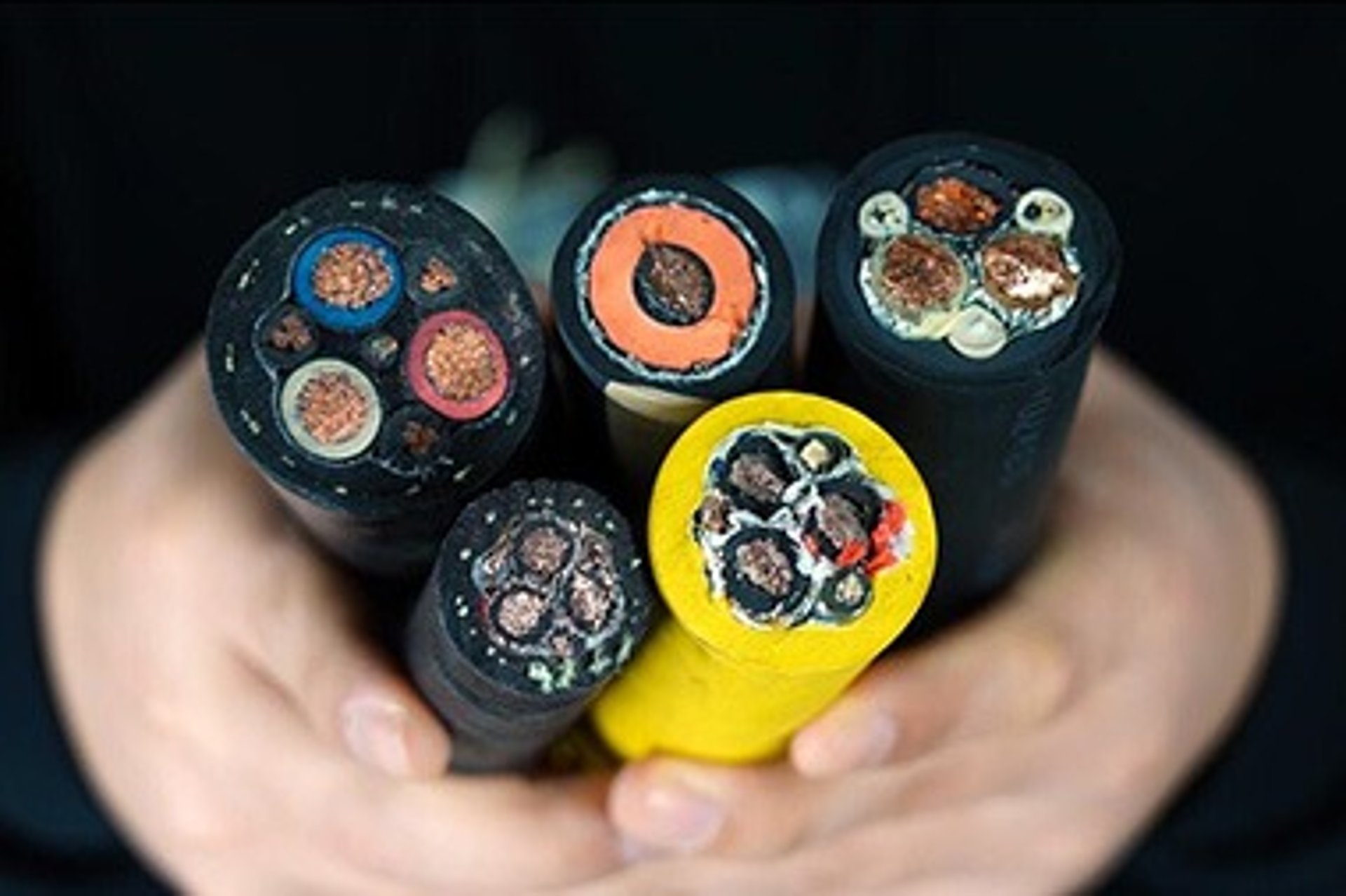Anhui Feichun Special Cable Co.,Ltd Li.wang@feichuncables.com
Where Are Diamonds Found and Mined in South Africa: A Complete Guide to the Rainbow Nation's Sparkling Heritage
Discover where diamonds are found and mined in South Africa, from the famous Big Hole in Kimberley to modern operations at Cullinan and Venetia mines. Learn about the geological origins, mining methods, and cultural significance of South Africa's diamond industry.
Li.wang@Feichun Cable
7/9/202514 min read


Introduction
South Africa stands as one of the world's most significant diamond producers, with a rich mining heritage that spans over 150 years. The country's diamond industry has shaped not only its economy but also global perceptions of these precious stones. From the legendary Big Hole in Kimberley to modern operations like the Venetia Mine, South Africa's diamond mining locations tell a fascinating story of geological wonder, human ingenuity, and economic transformation.
Understanding where South Africa's diamonds come from requires exploring both their geological origins deep within the Earth and the specific mining locations that have made the country famous worldwide. This comprehensive guide examines the major diamond mining areas across South Africa, their historical significance, current operations, and the ethical practices that govern modern diamond extraction.
The story of South African diamonds begins billions of years ago in the Earth's mantle, where extreme conditions created these precious stones. Today, these geological treasures are extracted from diverse locations across the country, each with its own unique characteristics and contributions to South Africa's diamond legacy.
The Geological Origins of South African Diamonds
Natural diamonds found in South Africa were formed approximately 3.3 billion years ago under extraordinary conditions of intense heat and pressure, located roughly 150 kilometres below the Earth's surface. These ancient formations occurred within the Earth's mantle, where temperatures exceeded 1,100°C and pressures reached levels unimaginable at the surface.
The geological process that brought these diamonds to accessible depths involved massive volcanic eruptions that occurred millions of years ago. These eruptions created diamond-bearing rock formations called kimberlites, named after the town of Kimberley where they were first scientifically studied. The blue ground, as miners initially called it, was later renamed kimberlite after the mining town that became synonymous with diamond discovery.
Kimberlite pipes represent ancient volcanic conduits that transported diamonds from the mantle to the Earth's surface at incredible speeds. These vertically-dipping volcanic pipes became the primary sources of South Africa's diamonds, initially suitable for open-cast mining operations. The kimberlite formations created concentrated diamond deposits that could be efficiently extracted using surface mining techniques.
The Kaapvaal Craton, one of the oldest and most stable geological formations on Earth, underlies much of South Africa's diamond-rich regions. This ancient continental nucleus, formed over 2.5 billion years ago, provided the stable foundation necessary for diamond formation and preservation. The craton's stability ensured that diamond-bearing kimberlites remained relatively undisturbed, allowing for the concentration of high-quality diamonds.
Beyond the primary kimberlite sources, South Africa's diamonds are also found in alluvial deposits. These alluvial diamonds represent stones that were removed from their primary position through erosion over millions of years and subsequently deposited in riverbeds, ocean floors, or shorelines. The Orange River and South Africa's west coast contain significant alluvial diamond deposits that have been worked for many decades.
Historical Context of Diamond Mining in South Africa
The discovery of diamonds in South Africa began with alluvial deposits, which were the first diamonds found in the country. These initial discoveries occurred along riverbeds where diamonds had been naturally concentrated by water action over geological time periods. The significance of these early finds became apparent when, by 1869, diamonds were discovered far from any stream or river, first in yellow earth and then below ground in the hard blue ground near what would become Kimberley.
The transformation of South Africa's diamond industry began in earnest with the discovery of the Big Hole site in 1871 on the farm Vooruitzicht, belonging to the De Beers brothers. This discovery triggered what became known as the "Diamond Rush," attracting thousands of prospectors from around the world to the Northern Cape region. The ensuing scramble for claims led to the place being called New Rush, later renamed Kimberley in honour of the British Colonial Secretary.
The scale of early diamond mining operations was truly remarkable. From 1871 to 1914, up to 50,000 miners worked the Big Hole with picks and shovels, yielding an extraordinary 2,720 kilograms or 13,600,000 carats of diamonds. This massive excavation created what became known as the world's deepest hand-dug mine, with a surface area of 17 hectares and a width of 463 metres.
The mining process evolved significantly during this period. Initially excavated to a depth of 240 metres using manual labour, the hole was later partially infilled with debris, reducing its depth to approximately 215 metres. Since then, it has accumulated about 40 metres of water, leaving 175 metres of the hole visible today. When above-ground operations became too dangerous and unproductive, the De Beers company extended mining operations underground, reaching depths of 1,097 metres.
The establishment of De Beers Consolidated Mines in 1888 by Cecil Rhodes marked a turning point in South African diamond mining. This company consolidated numerous small claims into large-scale operations, introducing modern mining techniques and establishing South Africa as a major player in the global diamond market. The company's influence extended beyond mining, shaping infrastructure development and establishing the foundation for South Africa's modern diamond industry.
Major Diamond Mining Locations in South Africa
Kimberley (The Big Hole)
Kimberley holds an unparalleled position in South African diamond mining history as the birthplace of the modern diamond industry. The Big Hole, officially known as the Kimberley Mine, represents not only a remarkable feat of human endeavour but also a symbol of South Africa's transformation from an agricultural society to an industrial powerhouse.
The historical significance of the Big Hole extends far beyond its impressive physical dimensions. The mine's discovery in 1871 fundamentally changed the course of South African history, attracting international attention and investment to the region. The mine's operations employed thousands of workers from diverse backgrounds, contributing to the development of Kimberley as a major industrial centre complete with infrastructure, schools, hospitals, and commercial establishments.
The mining techniques employed at Kimberley were revolutionary for their time. Initially, individual diggers worked small claims using basic tools, but as the mine deepened, more sophisticated methods became necessary. The introduction of steam-powered equipment, complex hauling systems, and eventually underground tunnelling techniques transformed diamond mining from a manual craft to an industrial process that influenced mining operations worldwide.
Today, the Big Hole serves as a major tourist attraction and historical monument, housing the comprehensive Kimberley Mine Museum. There is currently an effort in progress to register the Big Hole as a World Heritage Site, recognising its global significance in industrial and mining history. The museum showcases the mine's rich heritage, displaying original mining equipment, historical photographs, and a detailed replica of the town as it appeared during the diamond rush era.
The cultural impact of the Kimberley Mine resonates throughout South African society. The mine's diverse workforce included people from various ethnic and cultural backgrounds, contributing to the country's multicultural heritage. The skills, techniques, and industrial practices developed at Kimberley influenced mining operations throughout South Africa and beyond, establishing principles that continue to guide modern diamond mining operations.
Cullinan Mine (near Pretoria)
The Cullinan Mine, situated approximately 40 kilometres northeast of Pretoria, represents one of South Africa's most prestigious diamond mining operations. Established in 1902 in what was then known as the Transvaal, the mine gained international recognition for producing the largest gem-quality diamond ever discovered – the legendary 3,106-carat Cullinan Diamond.
The discovery of the Cullinan Diamond in 1905 captured global attention and established the mine's reputation for producing exceptional stones. This remarkable diamond was eventually cut into several smaller gems, including the Great Star of Africa (530.2 carats) and the Lesser Star of Africa (317.4 carats), which became centrepieces of the British Crown Jewels. The find demonstrated the extraordinary potential of South African diamond deposits and attracted significant international investment.
Currently managed by Petra Diamonds, the Cullinan Mine continues to be a significant producer of high-quality diamonds. The mine's operations in 2019 produced approximately 1.7 million carats, contributing substantially to South Africa's diamond output. The mine's continued productivity after more than a century of operations demonstrates the long-term viability of South African diamond deposits and the effectiveness of modern mining techniques.
The Cullinan Mine's geological characteristics make it particularly valuable for producing large, high-quality diamonds. The kimberlite pipe contains diamonds of exceptional clarity and size, making it one of the most valuable diamond mines in the world. The mine's reputation for producing exceptional stones has made Cullinan diamonds highly sought after in international markets.
The mine's operations employ hundreds of skilled workers and utilise advanced mining techniques to extract diamonds from increasingly challenging depths. The operation's commitment to safety, environmental stewardship, and community development reflects modern South African mining practices and industry standards, ensuring sustainable operations for future generations.
Venetia Mine (Limpopo Province)
The Venetia Mine, located in South Africa's Limpopo Province near the Botswana border, currently stands as the country's largest diamond producer by value. Opened in 1992 and operated by De Beers, this mine represents the pinnacle of modern diamond mining technology and practices in South Africa.
The mine's operations are particularly noteworthy for their scale and sophistication. Venetia produces approximately 8 million carats annually, making it one of the world's most productive diamond mines. The mine's substantial output contributes significantly to South Africa's position as a major global diamond producer and generates considerable revenue for the country's economy.
One of the most significant developments at Venetia is the ongoing transition from open-pit to underground mining operations. This massive transformation represents a substantial investment in mining infrastructure and technology, designed to extend the mine's operational life until at least 2046. The underground expansion demonstrates the long-term commitment to South African diamond mining and confidence in the country's geological resources.
The underground mining operation at Venetia utilises cutting-edge technology and innovative techniques to extract diamonds safely and efficiently. The mine's design incorporates advanced ventilation systems, automated equipment, and comprehensive safety protocols to protect workers while optimising production. These technological innovations position Venetia as a model for modern diamond mining operations worldwide.
The Venetia Mine's impact extends beyond diamond production to encompass community development and environmental stewardship. The mine operates extensive community development programmes, providing education, healthcare, and economic opportunities for local residents. Environmental management practices include habitat restoration, water conservation, and waste minimisation, reflecting the mine's commitment to sustainable operations.
Finsch Mine (Northern Cape)
The Finsch Mine, located in the Northern Cape Province, represents another significant diamond mining operation in South Africa's diverse mining landscape. Opened in 1967 and currently operated by Petra Diamonds, the mine has successfully evolved from an open-pit operation to a sophisticated underground mining complex.
The mine's underground operations utilise sub-level caving techniques, an advanced method that allows for efficient extraction of diamonds from deep kimberlite deposits. This technique involves creating a series of carefully planned tunnels and chambers that enable the controlled collapse of diamond-bearing rock, which is then processed through modern facilities to extract diamonds. The method's effectiveness is demonstrated by the mine's production of approximately 1.8 million carats in 2019.
Finsch Mine's operational history illustrates the evolution of South African diamond mining from simple extraction methods to complex underground operations. The mine's development required significant investment in infrastructure, including deep shaft construction, sophisticated ventilation systems, and modern processing facilities. These investments have created a long-term mining operation that continues to contribute meaningfully to South Africa's diamond production.
The mine's workforce includes skilled professionals from various disciplines, including mining engineers, geologists, processing specialists, and safety experts. The operation provides stable employment for hundreds of workers and contributes to the economic development of the Northern Cape region. Comprehensive training programmes ensure that workers develop the skills necessary for safe and efficient diamond mining operations.
Environmental considerations play a crucial role in Finsch Mine's operations. The mine implements comprehensive environmental management systems that monitor air quality, water usage, and waste disposal. These systems ensure that mining activities minimise environmental impact while maintaining productive and profitable operations.
Alluvial and Offshore Mining
South Africa's diamond resources extend beyond traditional kimberlite pipe mining to include significant alluvial and offshore deposits. These alternative sources of diamonds require different mining techniques and present unique opportunities and challenges for the industry.
Alluvial diamond mining focuses on deposits found along the Orange River and its tributaries, as well as small diamondiferous fissures that have been known and worked for many years along the southern banks of the Orange River. These diamonds were transported from their original kimberlite sources by river action over millions of years, creating concentrated deposits in riverbeds and adjacent areas.
The alluvial mining process involves extracting and processing gravel and sand to recover diamonds that have been naturally concentrated by water action. Trans Hex, one of South Africa's leading alluvial mining companies, operates several sites along the Orange River using specialised equipment designed for processing alluvial deposits, including screening plants, dense medium separation facilities, and advanced diamond recovery systems.
Offshore diamond mining represents a significant development in South Africa's diamond industry. The country's west coast contains substantial marine diamond deposits, formed when rivers transported diamonds to the sea over geological time periods. These deposits are distributed along the seabed and require specialised mining vessels and techniques for extraction.
Debmarine, operating sophisticated mining vessels off the South African coast, utilises advanced technology to locate and extract diamonds from the seabed while minimising environmental impact. These vessels incorporate onboard diamond processing facilities, allowing for immediate evaluation and sorting of recovered diamonds. The marine mining operations require careful coordination with environmental authorities to ensure sustainable practices.
The economic significance of alluvial and offshore mining extends beyond diamond production to include technological innovation and skills development. These operations have driven the development of specialised equipment and techniques that have applications in other industries, contributing to South Africa's reputation for mining excellence and technological innovation.
Ethical and Sustainable Mining Practices
South Africa's diamond industry has embraced ethical and sustainable mining practices that set global standards for responsible diamond production. The country's commitment to ethical mining is demonstrated through leadership in international initiatives and implementation of comprehensive regulatory frameworks that ensure diamonds contribute positively to society.
The Kimberley Process, established in 2003 to prevent conflict diamonds from entering the global market, was significantly influenced by South African expertise and leadership. South Africa's role in developing and implementing this certification system demonstrates the country's commitment to ensuring that diamonds contribute to development rather than conflict. The process requires participating countries to certify that diamonds are conflict-free and has been instrumental in improving the diamond trade's ethical standards.
South African diamond mines operate under strict safety and environmental standards that often exceed international requirements. These standards are enforced through regular inspections, comprehensive monitoring systems, and continuous improvement programmes. The emphasis on safety has resulted in significant reductions in mining accidents and dramatically improved working conditions for miners across the industry.
Environmental stewardship represents a core component of South African diamond mining practices. Mining companies implement comprehensive environmental management systems that address air quality, water usage, waste disposal, and biodiversity conservation. These systems include detailed environmental impact assessments, ongoing monitoring programmes, and comprehensive post-mining rehabilitation plans.
Community development initiatives form an integral part of South African diamond mining operations. Mining companies invest substantially in local communities through education programmes, healthcare facilities, infrastructure development, and economic empowerment initiatives. These investments create lasting benefits that extend well beyond the operational life of individual mines, contributing to sustainable community development.
The Gemological Institute of America's (GIA) Diamond Origin Report and Source Verification Service provide additional transparency for South African diamonds. These services allow consumers to verify the geographic origin of their diamonds and ensure compliance with ethical sourcing standards, enhancing the reputation of South African diamonds in international markets.
Modern Diamond Industry in South Africa
South Africa's contemporary diamond industry operates within a complex global market that presents both significant opportunities and considerable challenges. The country maintains its position as one of the world's top five diamond producers, contributing meaningfully to global diamond supply while adapting to rapidly changing market conditions.
Current diamond production in South Africa reflects the industry's maturation and strategic focus on high-value stones. While production volumes have declined from historical peaks, the emphasis on quality and value has maintained the country's importance in the global diamond market. South African diamonds are particularly valued for their exceptional quality and the rigorous ethical standards associated with their production.
The industry faces significant challenges from competition with lower-cost producers in other regions. Countries with lower labour costs and less stringent regulatory requirements can produce diamonds at reduced costs, putting pressure on South African operations. The industry has responded by focusing on operational efficiency, technological innovation, and value-added services that differentiate South African diamonds.
Technological innovation has become a key differentiator for South African diamond mining operations. The industry has invested heavily in advanced mining techniques, sophisticated processing technologies, and modern exploration methods. These innovations have improved productivity, reduced environmental impact, and enhanced safety standards while maintaining the high quality associated with South African diamonds.
Underground mining expansions, such as those at Venetia, demonstrate the industry's commitment to long-term sustainability and resource maximisation. These projects require substantial investment but extend mine life and improve resource recovery. Additionally, tailings reprocessing operations have become increasingly important, allowing companies to extract additional value from previously processed material.
The industry's contribution to South African economic development extends beyond direct employment and exports. Diamond mining operations contribute to infrastructure development, particularly in remote areas where mines are located. The industry's tax contributions and foreign exchange earnings support government programmes and broader economic development initiatives.
Cultural and Touristic Significance
South Africa's diamond mining heritage has created unique cultural and touristic attractions that celebrate the country's mining history and contribute meaningfully to its tourism industry. These attractions provide visitors with valuable insights into the diamond mining process and its profound impact on South African society.
The Big Hole in Kimberley stands as the most iconic diamond mining attraction in South Africa and attracts thousands of visitors annually. This remarkable site offers visitors an opportunity to learn about the mine's history and its crucial role in South African development. The site's ongoing effort to achieve World Heritage Status recognition reflects its global significance.
The Kimberley Mine Museum offers visitors an authentic experience of diamond mining life during the late 19th and early 20th centuries. The museum's comprehensive exhibits include reconstructed period buildings, original mining equipment displays, and interactive presentations that explain the diamond mining process. The museum's extensive collection provides valuable insights into the social and economic impact of diamond mining on South African communities.
The Cape Town Diamond Museum showcases South Africa's broader diamond mining heritage and its connection to global diamond markets. The museum's exhibits include displays of famous South African diamonds, detailed explanations of diamond formation and mining processes, and comprehensive information about the diamond trade's impact on South African society.
South African diamonds have achieved remarkable global cultural significance through their association with luxury, exceptional quality, and ethical sourcing. The Cullinan Diamond and its derivative stones in the British Crown Jewels represent the pinnacle of South African diamond achievement, while modern South African diamonds continue to be valued for their exceptional quality and ethical sourcing standards.
The tourism industry surrounding diamond mining has created substantial employment opportunities and economic benefits for local communities. Tour operators, guides, accommodation providers, and retail establishments benefit from the steady stream of visitors interested in diamond mining history and culture, extending the positive economic impact of diamond mining beyond operational mining activities.
Conclusion
South Africa's diamonds originate from extraordinary geological processes that occurred 3.3 billion years ago under conditions of intense heat and pressure deep within the Earth's mantle. The country's unique geological history, particularly the presence of ancient kimberlite pipes and the stable Kaapvaal Craton, created ideal conditions for diamond formation and preservation that continue to yield exceptional stones today.
The major diamond mining locations across South Africa each contribute unique stories of discovery, innovation, and adaptation. From Kimberley's historic Big Hole, which yielded 2,720 kilograms of diamonds through manual labour, to modern operations like the Venetia Mine producing 8 million carats annually, these locations demonstrate the evolution of diamond mining from simple prospecting to sophisticated industrial operations.
South Africa's diamond industry has successfully evolved from the labour-intensive operations of the 19th century to modern enterprises that prioritise safety, environmental protection, and community development. The industry's leadership in ethical mining practices, demonstrated through the Kimberley Process and comprehensive sustainability programmes, has established global standards for responsible diamond production.
The modern South African diamond industry faces global competition while maintaining its reputation for quality and ethical sourcing. Technological innovation, operational efficiency, and value-added services have become essential strategies for maintaining competitiveness. The industry's continued investment in underground mining capabilities and processing facilities demonstrates confidence in South Africa's long-term potential as a premier diamond producer.
Understanding where South Africa's diamonds come from provides valuable insight into the country's remarkable geological heritage and the ingenuity of its mining industry. From their formation in the Earth's mantle to their extraction using cutting-edge technology, South African diamonds represent a perfect combination of natural wonder and human achievement, ensuring their continued significance in both local and global markets for generations to come.



Email Address: Li.wang@feichuncables.com
© 2025. All rights reserved.


One-click to Quickly Contact
Products
Offshore & Marine Cable
XLPE Cable
Contact
Company
Location:
Building A Private Science and Technology Park, Hefei Economic and Technological Development Zone, Anhui Province, China
